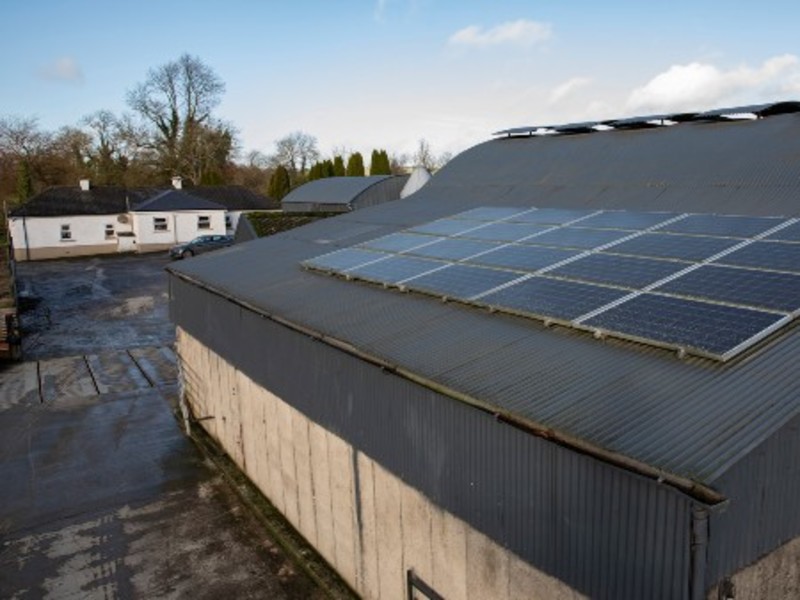An announcement is expected this month (December) on a system allowing farmers to sell excess solar energy produced on-farm back to the national grid, according to Micro Renewable Energy Federation (MREF).
Pat Smith, chair of MREF, told a webinar hosted by the RDS and the National University of Ireland Galway (NUI Galway) that solar technology is going to be deployed on every home, farm and business in the country.
The webinar discussed on-farm renewable energy and its ability to meet the climate change challenge.
Smith, who is also managing director of Local Power and former general secretary of the Irish Farmers’ Association (IFA), said the move to solar will be driven by economics, in the first instance.
If support is provided by the Sustainable Energy Authority of Ireland (SEAI) or the Department of Agriculture, Food and the Marine (DAFM), he claimed that payback for the installation of solar can be between four and six years.
Excess solar energy
Pat Smith told the webinar that ESB Networks is set to announce an agreement this month that will allow homes, businesses and farms to supply excess solar power generated back to the national grid.
He said there will be “quite a lot of rules and regulations around it, but it is the first time this has happened in Ireland in a meaningful way”.
“The development is long overdue, but is welcome.”
Smith explained that this will present an opportunity for the farming community, particularly those with their own transformer, to generate more of their own energy and export the surplus to the grid.
He predicted that there will be lots of interest in such a scheme, but the capacity of the national grid will become the limiting factor and the early movers are more likely to get access.
“All farmers need to watch this space. If they have an ambition of exporting energy to the grid, then they need to move quickly,” Smith said.
Bureaucracy
Smith said the hope is that any scheme will be made as easy as possible to apply for and that the economics work, so there is a reasonable payback for farmers, householders and business owners.
“The key message to officials is that their support is very welcome, but it needs to be simplified,” he said.
“The bureaucracy around attaining grants, while we know there has to be oversight, it has gone too far. It should be simple to apply for a grant, there should be no complications.”
He said that farmers are very slow to go for grants in some circumstance as they get frustrated at the level of paperwork.
“Sometimes the benefit is defeated by the extra bureaucracy,” he observed.
In relation to his three-year lobbying on planning permission exclusions for solar PV, Smith said the ambition around climate change from the government is not being matched by action and urgency.
Energy efficiency
The webinar also heard that farmers need to be as energy efficient as possible.
“Any farm business that is considering investing in solar should carefully tailor the project to the annual energy profile of the business,” advised Barry Caslin, Teagasc energy and rural development specialist.
“Start by looking at how and where the energy is used on-farm, how you can improve energy efficiency and then look at which renewable energy solution and specification best meets the profile of electricity on the farm.”
He said farmers could consult an energy engineer, a solar PV company or check their own electricity bills to see how many kilowatt hours (kWh) are being used.
